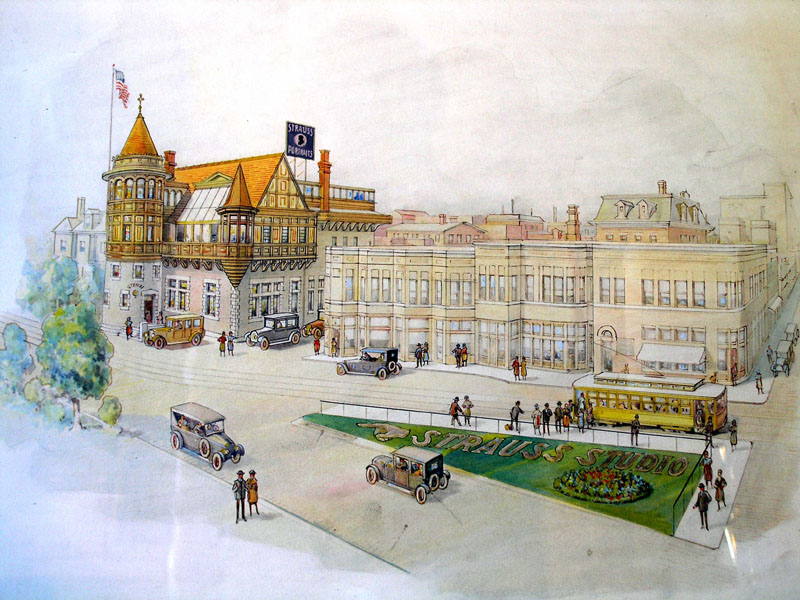
JULIUS
CAESAR STRAUSS
A
SUN
OF
ST. LOUIS
1857-1924
by
Thomas G. Yanul
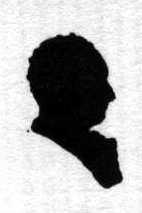
Julius
Caesar Strauss - known professionally and personally as "J. C. Strauss,
was
a guiding light in his chosen photographic profession. Not only did he become
a
famous personage of the City of St. Louis, but his reputation was both
national
and
international. He was both a "son" of St. Louis - having adopted St. Louis
as his
home,
and of course St. Louis welcomed him - especially after becoming a "sun"
of
the
city by his luminous personality attracting the notables of the city,America
and
Europe.
[UPPER
R/PHOTO OF STUDIO, 1920'S -COURTESY OFGRANDSON J.C.
STRAUSS
-CLICK ON PHOTO FOR LARGE IMAGE OF WATERCOLOR]
Strauss's
background has not yet been thoroughly researched, but one published
report
stated the following:
"
Mr.
Strauss has had an eventful experience in professional
photography.
He began as a boy of twelve in a tin-type gallery in Cleveland.
afterward
he worked in St. Louis, migrating to Chicago in 1876, and
returning
to
St. Louis a year later. Here, in 1880, he started a business with Mr.Ed
Guerin
as
partner, and the first day's receipts amounted to 25 cents. After a few
weeks
Guerin
retired, and since that time Mr. Strauss has worked alone, winning
success
against
many of the cleverest workers in the profession, such as Sholten,
Fox,
Seed,
Cramer, Benecke and others of equal repute."
Wilson's
Photographic Magazine-Apr.1900
Other articles state 1879 as a starting date in St. Louis, but even
a date of
1876
was used in reference to old negatives that escaped the disastrous
studio
fire of 1900.
IN
MEMORIAM
J.C.
STRAUSS II
9-13-1920
12-21-05
WHO
KEPT HIS
FATHER'S
&
GRANDFATHER'S
MEMORY
ALIVE,
FIRST
HAND
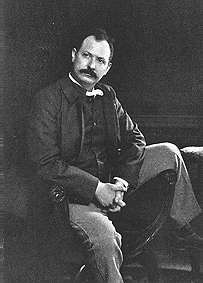
Strauss
in 1897
Wilson's
Photographic Magazine
Bits
and pieces from the St. Louis Globe-Democrat Magazine, June 12, 1927 and
Wilson's
Photographic Magazine-various years.
Julius
Caesar Strauss was born in July of 1857 in Cleveland, Ohio.
In
the early 1870's J.C. and a cousin "struck out for St. Louis". "Our
first
job
was selling brooms for the Samuel Cupples Woodenware Co".
J.C.
soon wearied of this job and found work as an assistant in a
photograph
gallery on Fourth St., and there he decided he had found
his
life's career. He became a proficient and dedicated employee,
learning
his trade well. By 1879, at age 22, Strauss had enough self-
confidence
and had saved enough money to open his own gallery at
1313
Franklin Av. (later re-numbered to # 1245)
Having
obviously become successful at his trade, Strauss moved to a
new
custom-designed studio building in 1896; a very luxurious
structure
designed by St. Louis architect Louis Christian Mullgardt,
located
at 3514 Franklin Av.
The
dedication and grand opening occured March 4, 1897.
On
the night of January 31, 1900, the studio suffered a severe fire
gutting
the interior space, including its literal treasure of artworks
and
decorations. Fortunately, a fireproof vault in the basement preserved
the
studio's negatives. Strauss immediately took up his work at borrowed
spaces
while the studio was rebuilt. A little over one year later another
grand
opening, March 4, 1901, celebrated the re-constructed
Strauss
Studio - it became known as the "Castle".
In
almost all professions, certain individuals, through sheer power of
personality,
become
the gathering places of their peers and others. In St. Louis it was
Julius
C.
Strauss as the social magnet.
ED
NOTE:this is not to impune Gustav Cramer, that most beloved
photographer/plate
maker known as "Papa Cramer", welcomed
throughout
the country with open arms. A truly wonderful person and
business
man. But Cramer's backyard was the entire country, while
Strauss'
was his studio. Both could exist simultaneously in St. Louis because
their
constituencies were diverse and not at cross-purposes. Besides, they
were
the closest of friends that included skinnydipping, fishing &
photographing.
In
Chicago Strauss' good friend and colleague Mathew J. Steffens was
the
magnet...in Philadelphia it was William Rau. In Detroit it was Frank Scott
Clark.
And in most other large cities around the country certain individuals
held
court in their own places or associated locations. The nations
professionals
were
a tight-knit group that fed on social and professional interaction.
These
were truly the days of hospitality. Maybe it was a carryover from
Europe
- when visitors were deemed very important persons. Before all of
our
current electric and electronic entertainments, it was people who
provided
the most joyful form of relaxation and enjoyment.
Strauss'
basement was called the "Growlery". Rau had his "Coal Bin". Places
where
not only photographers, but artisans, thinkers, poets, writers, and
patrons
of the arts gathered, as if they all belonged to the same club.
There
were meetings of the minds across the country...and around
the
world as late 19th and early 20th Century minds co-mingled.
Photographers
in
many instances were still aligned with artisans and thinkers...business
was
important
but so was comradship and social intercourse.
Strauss,
like his friends and cohorts, was very active in the professional
associations
of photographers. Lecturing at local and national meetings,
displaying
works at exhibitions, and offering themselves and their studios
as
joyful meeting areas when conventions were held in their cities.
I
doubt if most smalltown photographers attending a convention in
St.
Louis were not awed by the grandness of studios like Strauss'
or
Steffens' in Chicago, or Falk's in New York City. These were
elegant
baroque
masterpieces in miniature in some cases, equal to what some
royalty
had in Europe. Of course these were houses of wealth because
they're
customers in most cases were the carriage trade...a class that
expected
to not only be serviced for their needs, but done so in style.
Actually
that aspect remains a trueism for today's "carriage trade".
J.C.
Strauss had a brother named Benjamin who was also a photographer
but
little is known about his days in St. Louis. little of which is known.
In
1900 Ben moved to Kansas City, Missouri to start his own studio.
Ben
took on an employee named Homer Peyton who, according to legend,
was
so well liked and important to the operation that Strauss made him a
partner
in the company and the name was changed to Strauss-Peyton.
That
studio became quite famous in its own right for its portraiture of
theatrical
& cinema people. Peyton in particular created very artistic
images
not
just through the camera but by physical manipulations on the negatives
and
even on the final prints. Some were exceedingly handsome and artistic.
A
west coast collector has a large number of these portraits and hopefully
they
will soon receive a long overdue exhibition and possible publication.
Peyton
left the firm in the 1920's. Ben Strauss never married so his
Strauss
family line ended with him.
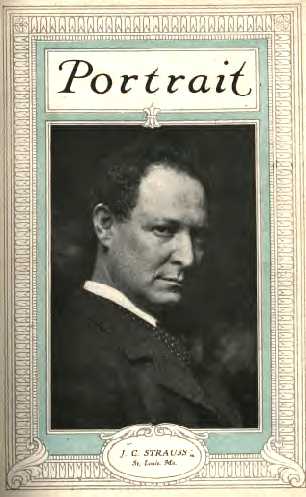
Ansco
"Portrait" Magazine
October,
1909
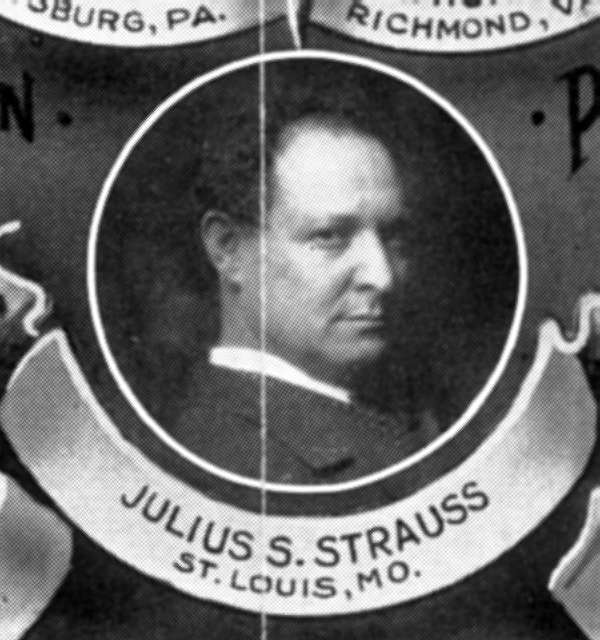
From
leading American Photographers
American
Photographic Textbook co.
1911
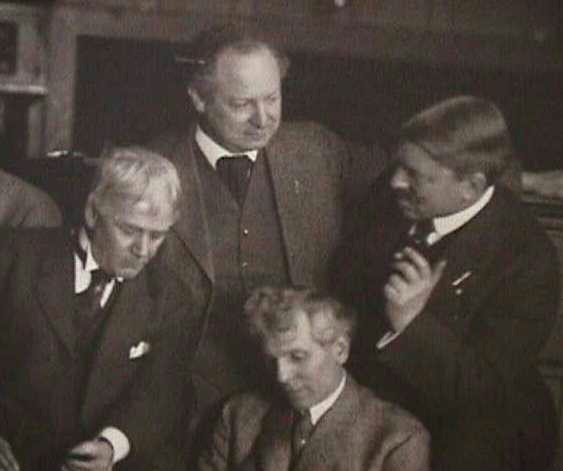
Strauss,
top- H.H. Pierce, right
M.J.
Steffens, left - F.S.Clark, bottom
Chicago,
ca.1915-20
Photo
by Steffens
Photo
collection author
To
see larger image with
info
on other photogs see page 2
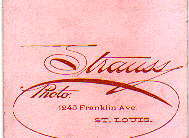
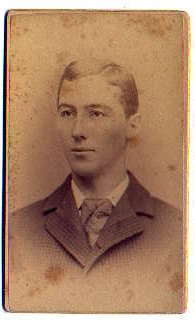
EARLY
STRAUSS CARTE DE VISITE
WITH
ADDRESS OF 1245 FRANKLIN ST.